By the mid ’80s, after only ten years in business, Hunter Marine had become one of the two leaders (with Catalina Yachts) in the volume of auxiliary-sized sailboats on the US market. And, like Catalina, the corporate philosophy at Hunter was to mass produce low priced boats with as few changes in tooling, hence design, as possible.

As a result, Hunter until 1978 had a line basically consisting of three boats: the Hunters 25, 27 and 30, added to thereafter by smaller (20′ and 22′) and larger ( 31, 34′, 36′, 37′ and 54′) while the original three remained in production. Only after nine years production was the 25 replaced in the line (with the 25.5) and, after 10 years, the 27 (by the 28.5).
The basic marketing program of Hunter has remained remarkably consistent since it produced its first boats in 1974. That policy has made price the single most important factor in selling its boats. With the cost savings from mass production and minimum changes in tooling, Hunter has sold by far the highest volume of the lowest priced boats of their size and type on the market for the last 10 years.
Hunter Yachts came into being amid the energy crunch in the early 1970s. Silverton, a large manufacturer of smaller powerboats, expanded to build “energy-conscious” sailboats. It started with three boats, two John Cherubini-designed performance cruisers, the Hunters 27 and 30, and a Robert Seidelmann/J. Cherubini-designed small (MORC) racer, the Hunter 25.
The original Hunter 25 was a racy boat with a wedge-shaped cabin trunk that limited interior space. That space was further restricted by a design parameter for trailering, an 8′ beam.
From the outset Hunter has maintained a policy of selling its boats “fully equipped” so the original boats came with sails, dock lines and fenders, required safety gear, etc. and no factory supplied options except a shoal draft keel (in the fall of 1978 this sales policy got a name, CruisePac). Price of the 25 in 1974 was quoted at less than $8,000 with the boats reportedly being offered to dealers at closer to $6,000 in order to encourage a high sales volume.
By 1975, the desired sales being apparently unattainable with a boat as performance-oriented as the 25, the boat was offered in a so-called “pop-top” version with a more box-like cabin trunk at a price just $150 above the $8,500 tag on the standard version. The hull, rig and interior layout remained essentially the same. The following year the original model was discontinued and a box cabin trunk model without a pop-top became the standard Hunter 25.
At the same time, in keeping with the cruising image and purpose, a Yanmar single-cylinder diesel engine became an option and much was made of the increased headroom (from 5′ 2″ to 5′ 8″). Later still the transom was made more vertical (cockpit space having been at a premium and helping to cure the problem of mounting a outboard motor) and the headroom further increased.
In all over 2,000 25s were built, the exact number an oddly unavailable figure from Hunter Marine. Today they are probably the most universally recognized boat of their size and one of the most ubiquitous both in anchorages and on the used boat market, in brokers’ listings and classified advertising.
A Look at the Boat
Looking critically at a boat with the sales success of the Hunter 25 invites contention, but it does have notable deficiencies as well as notable virtues. Its virtues start with price just as Hunter Marine intends they should. When low price is a chief priority, it buys a lot of boat in a Hunter 25. This axiom applies just as much to the used 25 as it did to the new. For the entry-level sailor or one moving up into a first boat suitable for cruising, the 25 offers good livability (space, berths, enclosed head, and cookable galley), at least average performance and stability, a functional decor and styling, easily maintained (or neglected) cosmetics, and adequate structural strength for semi-protected waters. And all of this is obtainable at a price that competes with typical prices for the smaller, more cramped 23 footers of similar vintage.
On a negative side, the 25 suffers from the original narrowish beam, an unfortunate parameter since the boat never proved practical for trailering. Worse still, the shoal draft version, otherwise a desirable feature in boats of this size and purpose, does not have top-notch performance or stability. The cockpit is short and cramped for daysailing with a crew of more than three or four, and the coaming is too low for back support.
In general the Hunter 25 performs adequately. Under PHRF a fin-keel 25 rates about 222 (shoal draft, 230 or so), letting it sail boat-for-boat with the Catalina 25 and the O’Day 25, two slightly higher priced but otherwise comparable boats in size and type. Windward performance is hurt by shrouds attached at the rail and by the heavy weather helm created as the 25 heels. The shoal version further suffers from excessive leeway.
Perhaps the most serious fault of the Hunter 25 (as well as a lot of other boats of her size) is the inadequacy of an outboard motor as auxiliary power. For a “transition cruiser” auxiliary power is a highly desirable feature. At 4500 pounds with considerable windage the 25 needs engine power unavailable with outboard motors of reasonable horsepower. Add to this problem the tendency of a transom-mounted engine to lift free of the water in pitching conditions as well as the awkwardness of operating engine controls from the end of a tiller in a tight cockpit and you have persuasive arguments in favor of inboard engines in boats of this size even at the considerable additional cost.
Since, with the exception of the short-lived Yanmar option and owner-retrofitted engines (usually Saildrives), Hunter 25s are not available with inboard power, they are probably not a good choice for a buyer wanting a small auxiliary cruising boat.
What To Look For
Anyone in the market for a lower priced boat has to be more aware of possible problems than those prepared to spend more. The reasons are two-fold. In the first place, quality in boats is to a large degree a function of price. Secondly, for the less expensive boat the cost of repairs or replacement becomes a greater proportion of the value of the boat. With this in mind, we suggest looking at the following:
• A number of owners report problems with gelcoat. Crazing, voids, and porosity (pinholes that trap dirt) are commonly cited faults, especially in the deck and cabinhouse. Also, Hunter used a stippled gelcoat non-skid deck surface that deteriorates over the years. This pattern can be restored but it is not an easy task for the average owner unfamiliar with working with gelcoat.
• About half of the Hunter owners (25s and 27s) whose PS Boat Owner’s Questionnaires are in our files report at least “some” bottom blistering. Even if owner-refinished, the cost of ridding the boat of the pox could amount to 10% or more of the resale value of the boat and is unlikely to be more than tokenly recoverable in the sale price.
• Another oft-cited problem with the 25 is deck and cockpit-sole flexing. This flexing, while not a severe structural problem unless delamination has occurred, is unnerving and offends our sense of what a boat should feel like underfoot. To check for delamination (separation of the outer fiberglass laminate from the core material) tap the whole deck lightly with a hard plastic object such as the handle of a screw driver. Voids produce a dull sound.
• Play in the rudder post seems common on the 25s. Of the three we specifically looked at, 1977-1980 vintage, all had a noticeable degree of “slop” between the rudder post and the rudder tube. There is no simple or easy way to cure the ill that is more annoying than dangerous.
• Several readers report—and our findings support-the impression that 25 built between 1978 and 1981 are generally of at least a bit better quality than those built before or since. Note, however, there there can be no similar assurance that boats of that era were better maintained.
In our opinion the Hunter 25 does not recommend itself for any substantive restoration project except as it may help make the boat more enjoyable to own. With the number on the market, the basic functionality of the boat inside and out, and the low cost versus quality, expensive improvements do not produce commensurately higher value for the boat. At the same time, a polyurethane refinishing, bottom fairing (especially the iron keel), some dressing up of the decor (e.g., new berth upholstery), and a good choice of sails can do much to both the appearance and the pleasure of owning a 25.
One owner questionnaire voices the wonder of why Hunter-built boats tend to depreciate in contrast to other less popular boats. The reason is simple: the supply exceeds the demand. With the numbers built there are a lot on the used boat market. Many are also available because they were traded in on new boats, a source on the used boat market that tends to further depress selling price.
Conclusions
Frankly the Hunter 25 is best as a used boat when the most boat for the dollars is the overriding concern and, on a buyer’s market, when a good deal presents itself. Yet even then there are roomier, faster, better finished, and more distinctive boats readily available at comparable prices. One example is the Catalina 25. More importantly we think buyers should think smaller if budget constraints are crucial because they will want better performance with outboard power or they should think inboard at 10-15% higher price if needing 25′ and/or 4000+ pounds of boat.
If still otherwise sold on a Hunter 25, we would opt for a deep draft 25 for her performance and greater stability, and look for one that has had better-than-average maintenance to reduce the chances of serious problems. Whether valid or not, we’d also look for one built between 1978 and 1981—they have impressed owners as better boats.




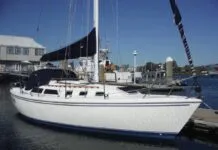




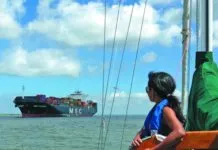
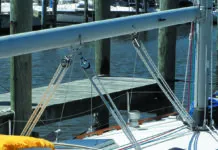

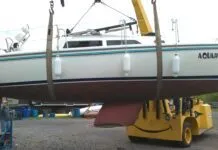
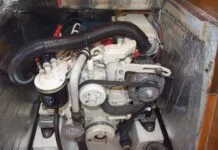
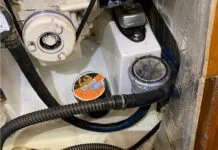
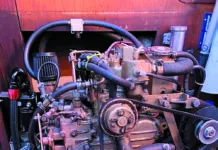
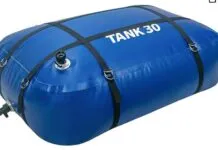
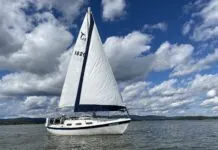
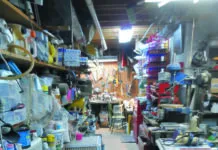













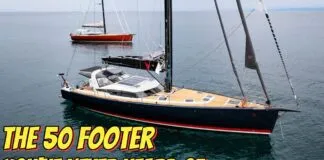



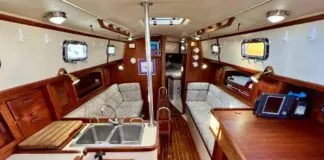
Looking at trailerable 25’s and read your articles on the Hunter 25 and Catalina 25. Your research and writing style are excellent, and insights greatly appreciated. Planning to buy a basic and clean “grandaddy’s baby” of a ready-to-sail 1982 Hunter 25 deep draft at $2,500 over a nicely outfitted yet 2-year out of water ’87 Catalina 25 pop-top swing-keel with trailer and lots of extras for $10,000 (plus new rudder and 4 new tires plus…?). Two 50-sumthin’ high school sailers looking to get back into sailing and test part-time live-aboard to complement our full-time tiny home lifestyle. Thanks for sharing your perspective. 🙂